Email: h.hackett@ucl.ac.uk |  |
Education and Experience
Helen Hackett was educated at Manchester High School for Girls and the University of Oxford (Lady Margaret Hall). She was a Junior Research Fellow at Merton College, Oxford, and has been at UCL since 1990.
Research Interests
Helen has broad interests in Renaissance literature, especially female writers and representations of women. She has written extensively on images of Elizabeth I and on Shakespeare (especially A Midsummer Night’s Dream). She has also published on Renaissance prose fiction, especially Lady Mary Wroth’s Urania; and on the manuscript poems and letters of the Aston-Thimelby circle, a seventeenth-century Catholic literary network in which women were active.
Helen’s Short History of English Renaissance Drama was published in 2013. Her latest book is The Elizabethan Mind: Searching for the Self in an Age of Uncertainty, published by Yale University Press; full details here. Research for the book was supported by a Leverhulme Research Fellowship.

You can hear Helen discussing her book The Elizabethan Mind on the podcast That Shakespeare Life.
You can hear Helen on In Our Time discussing Romeo and Juliet and A Midsummer Night's Dream.
Helen gave an online talk on 'Shakespeare’s Sisters: Early Women Writers in Westminster Abbey' which you can watch here. Her follow-up Q&A on the same topic is available here.
|
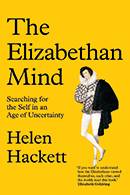 | 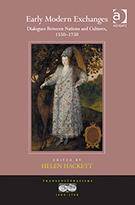 | 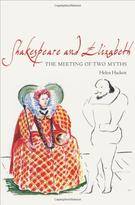 |
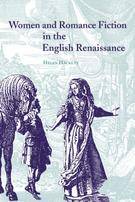 | 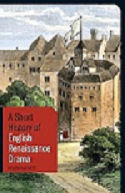 | 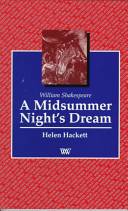 |
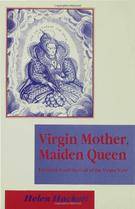 | ||
Books
The Elizabethan Mind: Searching for the Self in an Age of Uncertainty (Yale University Press, 2022)
(As editor:) Early Modern Exchanges: Dialogues Between Nations and Cultures, 1550-1750 (Farnham: Ashgate, 2015)
A Short History of English Renaissance Drama (London: I. B. Tauris, 2012)
Shakespeare and Elizabeth: The Meeting of Two Myths (Princeton University Press, 2009)
Women and Romance Fiction in the English Renaissance (Cambridge University Press, 2000)
Writers and Their Work: ‘A Midsummer Night’s Dream’ (British Council/Northcote House, 1997)
Virgin Mother, Maiden Queen: Elizabeth I and the Cult of the Virgin Mary (Basingstoke: Macmillan, 1995)
Edition
Introduction to A Midsummer Night’s Dream, ed. Stanley Wells (New Penguin Shakespeare, 2005)
Recent Book Chapters
‘Hermits and their meanings: performing retirement at the Elizabethan court.’ In Daniel Starza Smith and Hazel Wilkinson (eds), Liber amicorum H. R. Woudhuysen: A Bibliographical Tribute. Oxford: Oxford University Press, 2024.
‘“Sad stories of the death of queens”: Elizabethan beginnings and endings.’ In Katherine Scheil and Linda Shenk (eds), Early Modern Improvisations: Essay on History and Literature in Honor of John Watkins. London: Routledge, 2024. pp. 10-23. Available with Open Access here.
‘“All their minds transfigured so together”: the imagination at the Elizabethan playhouse.’ In Simon Smith and Emma Whipday (eds), Playing and Playgoing in Early Modern England: Actor, Audience and Performance. Cambridge: Cambridge University Press, 2022. pp. 242-61.
‘Unlocking the mysteries of Constance Aston Fowler’s verse miscellany (Huntington Library MS HM 904): the Hand B scribe identified.’ In Joshua Eckhardt and Daniel Starza Smith (eds), Manuscript Miscellanies in Early Modern England. Paperback edition: Routledge, 2019. pp. 91-112.
‘Anne Boleyn’s legacy to Elizabeth I: neoclassicism and the iconography of Protestant queenship.’ In Anna Riehl Bertolet (ed.), Queens Matter in Early Modern Studies: A Festschrift for Carole Levin. Cham, Switzerland: Palgrave Macmillan, 2018. pp. 157-80.
Recent Journal articles
‘“Look on thy Mary with her bitter tears”: Nicholas Breton’s impersonations of Mary Sidney’. In Alison Findlay (ed.), Special Issue: Penshurst and Beyond. Sidney Journal 41.1-2 (2023): 59-71.
‘“He is a better scholar than I thought he was”: debating the achievements of the Elizabethan grammar schools.’ Early Modern Voices, ed. Dermot Cavanagh and Robert Maslen, special issue, Journal of the Northern Renaissance 9 (Autumn 2017). Available here.
With Yasmin Arshad and Emma Whipday. ‘Daniel’s Cleopatra and Lady Anne Clifford: from a Jacobean portrait to modern performance.’ In Elizabeth Schafer (ed.), Attending to Early Modern Women as Theatre Makers. Early Theatre 18.2 (2015): 167-86.
‘A new image of Elizabeth I: the Three Goddesses theme in art and literature.’ Huntington Library Quarterly 77.3 (2014): 225-56.
 Close
Close

